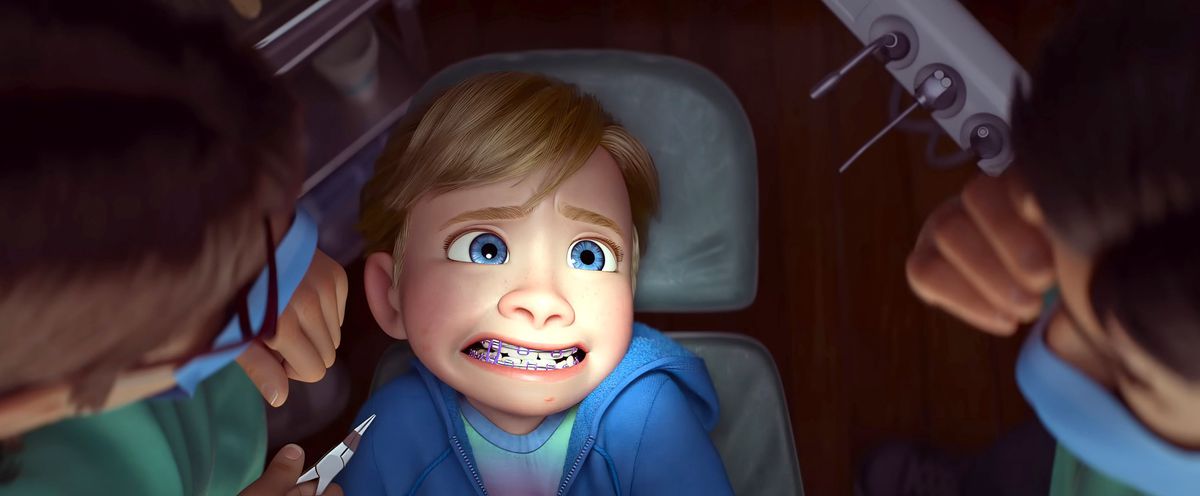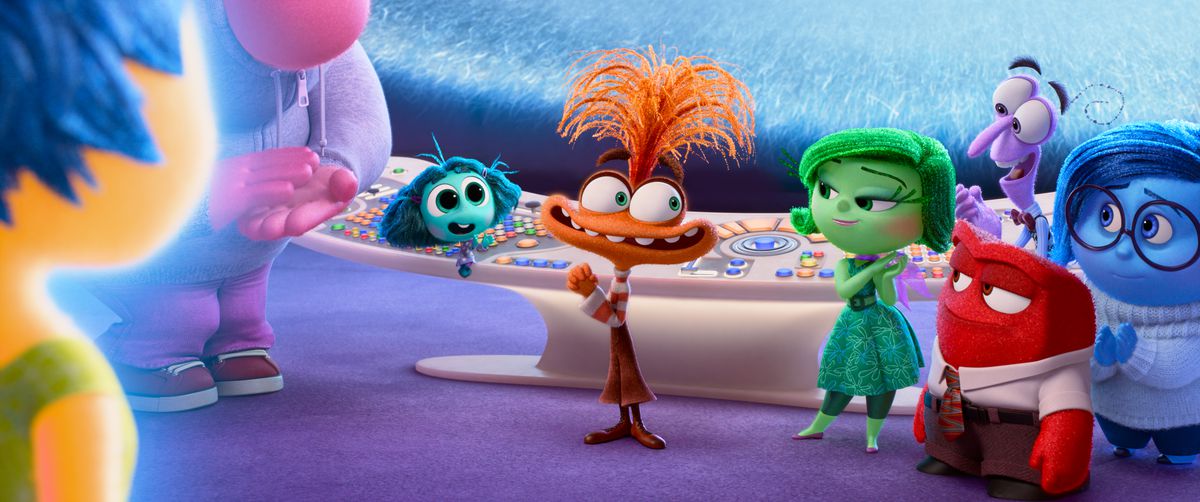The older you get, the more important Inside Out 2 becomes
Inside Out 2 takes the slow box office 2024 by storm, after he more than $1.2 billion worldwide within a few weeks of its release. These kinds of big financial successes are generally reserved for “four-quadrant” films, movies that appeal to the four key box office demos: men and women, both over and under 25. While Pixar Animation Studios’ latest film fits that bill, I came out of the theater feeling I firmly believe that while this film will be relatable and enjoyable for most children of all ages, it will resonate even more with adults.
I took my 7 year old niece to Inside Out 2and she loved it. A media-literate gremlin who spends much of her free time robbing fictional banks in Roblox’s Brookhavenre-watching Pixar’s To blushor mesmerized by YouTubers unboxing their latest Pop Mart purchases, she knows how to dissect a fictional story, even if she doesn’t fully realize it yet. She chose Ennui (Adèle Exarchopoulos) as her favorite character in Inside Out 2and she laughed at many of the film’s jokes. She identified with much of the interpersonal drama that befell Riley, the now 13-year-old girl at the center of the film: My niece just started school last year, so like Riley, she’s going through a lot of social changes. And she has a teenage brother, so it was helpful to see a simple representation of how becoming a teenager can change one’s emotional landscape.
Image: Pixar Animation Studios/Everett Collection
Like many children I know, my niece is desperate for information that will help her understand the world that adults live in. She plays Brookhaven as a way to dress up as an adult, decorate her house, and ride around town in a limo without being tied to realities like financial stress or a full-time job. I think this quest for knowledge about adulthood is driven by a kind of fear that many children today feel, an unconscious belief that if she figures everything out before she turns 18, she might be able to avoid some of the problems she recognizes in the adults around her. For her, Inside Out 2 was a success, even though she doesn’t fully understand why yet.
For reference, I am 36 years old, firmly in adulthood and getting closer to millennial middle age every day. I have suffered from anxiety since childhood, so I was fascinated by Inside Out 2‘s exploration of belief systems and how fear can hijack them as we grow older. Pixar’s original 2015 Inside out presents the character of Sadness (Phyllis Smith) as a potential villain, but gradually reveals why sadness is essential to a healthy inner world. Anxiety (Maya Hawke) gets a similar treatment in Inside Out 2In a reversed version of Sadness’ storyline, Anxiety is initially presented as the solution to all of Riley’s problems growing up, but ultimately proves to be a false panacea.
When fear is balanced with other emotions, it can fuel ambition, motivate us to achieve our goals, keep us alert, and help us prepare for potential threats. As Anxiety puts it in the film, she’s simply trying to protect Riley by helping her anticipate and counter threats to her self-esteem or social status. But in excess, fear can paralyze us and keep us from moving forward. It can undermine our sense of self-worth and personal agency. It can convince us that if we can figure out how to stay on top of things (an impossible task), we can be immune to suffering (an impossible goal).

Image: Pixar Animation Studios/Everett Collection
As an adult who has found some perspective through EMDR therapyI understand exactly what Inside Out 2‘s creators are trying to communicate when they portray human value systems as simultaneously malleable and profound. I know what it’s like to falsely believe that I no longer have access to joy, and what it’s like to replace that negative belief with a more positive one. I’ve heard many adults on social media comment on how much of a punch this line of dialogue hits: “Maybe that’s what happens when you grow up: You feel less joy.”
That line is central to the film’s theme and its catharsis. And it can certainly hit hard for kids — especially kids who are understandably concerned about the fear and confusion and unhappiness they see in the adults around them. But I think it’s more aimed at adult viewers. For kids — and the character Joy (Amy Poehler), who has only ever lived in Riley — it’s really a question of, “Am I going to lose joy as I get older?” Adults probably already have an answer to that question and a strong emotional response when they see it again in Inside Out 2.
The film ultimately takes a definitive stand on that question, offering an answer for both children and adults. In the film’s climax, Anxiety spirals out of control, sending Riley into a panic attack. She must give up control of Riley’s internal landscape before Riley can feel emotions like Joy, Sadness, and Anger (Lewis Black) again. Only when Anxiety lets go can Riley take responsibility for her actions and begin to feel better about herself. Only after Anxiety is reduced to a supporting role rather than a leading role does the film tell us that joy need not be sacrificed on the path to adulthood—even if that’s a lie we adults sometimes tell ourselves in the effort to get through seemingly endless to-do lists and work weeks. And it’s a message adults need to hear even more than children.

Image: Disney/Pixar
In this age of misinformation and endless distraction, there’s something to be said for films that communicate themes simply and honestly, leaving less room for misinterpretation – films like Inside Out 2 and the biggest global hit of 2023, Barbie. There is so much space in online and media conversations right now for people to misinterpret ideas, both intentionally and unintentionally. It is often even encouraged, thanks to the popularity of the ever-frothing machine for outrage cultureI think movies like Inside Out 2 And Barbie hit harder, especially with adults, because they try to convey important ideas directly, leaving as little room for misinterpretation as possible.
Children are used to this in their media, but adults are not. Which explains why so many adults latched onto America Ferrera’s ultra-straightforward Barbie monologue about conflicting norms for women as a topic of discussion. I think the same goes for many of the ideas that are in Inside Out 2Just because we are adults doesn’t mean we don’t need explanations anymore or that words of comfort aren’t meant for us.
There’s this idea in American culture that once we reach adulthood, we should be able to endure cruelty and hardship without complaining, comforting ourselves or catharsis without feeling. But why would that be true? Leaving childhood behind only makes our emotions more complex and better at playing tricks on us when we don’t have the space or tools to understand them. Our emotions can be just as powerful as childhood emotions, but now they’re coupled with the power that adulthood can give us to hurt ourselves and others.
If there’s one thing that makes films like these so special, Inside Out 2 — films that demonstrate the need to acknowledge the power that emotions can have over us — much more important for adults. Adults are so rarely encouraged to feel, express, and process their emotions the way children do. This leaves especially the adults who were not given that opportunity as children. Inside Out 2 offers adults a small window of opportunity to better understand our own emotions, particularly the role that fear can play in our lives. And it does so by presenting its messages to us in the form of a film made for children. What a vital gift that is to our culture, and to all those still working through their own fears, at whatever age.
